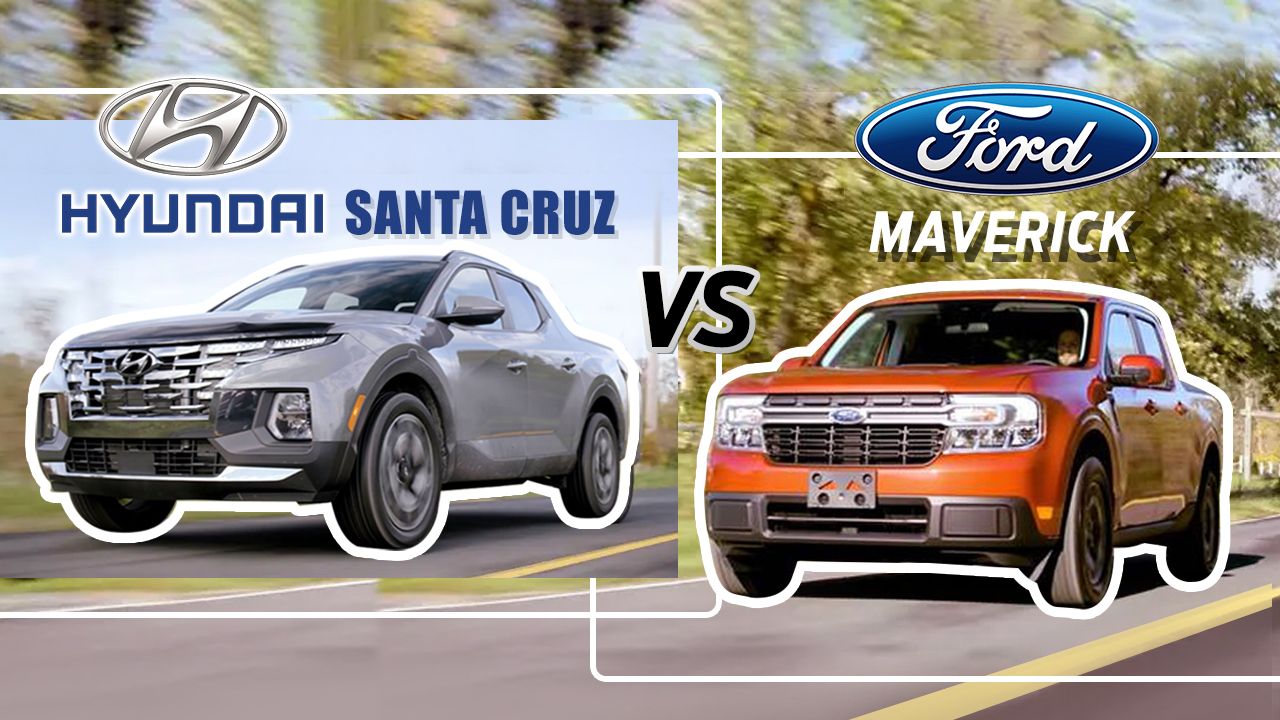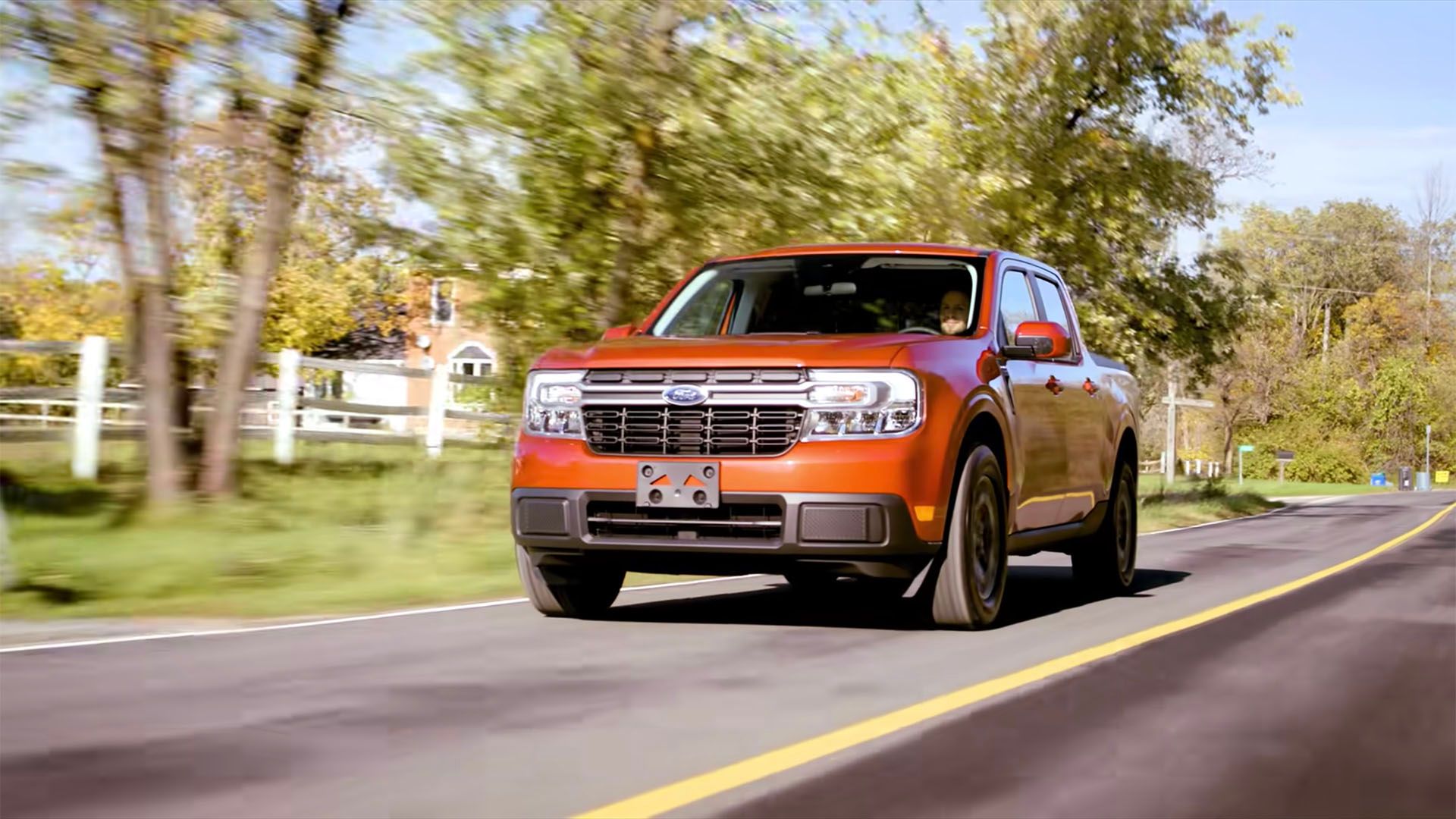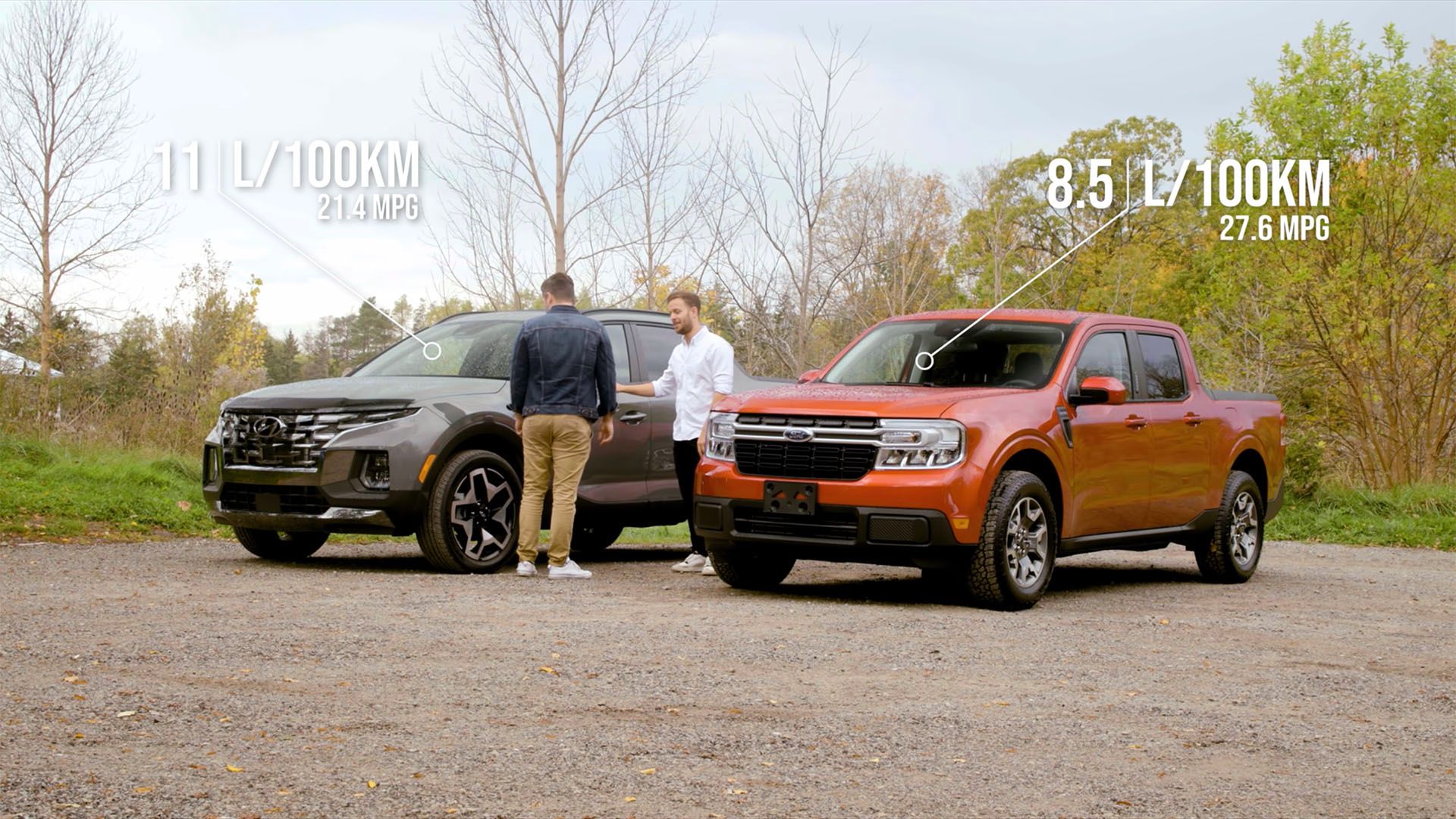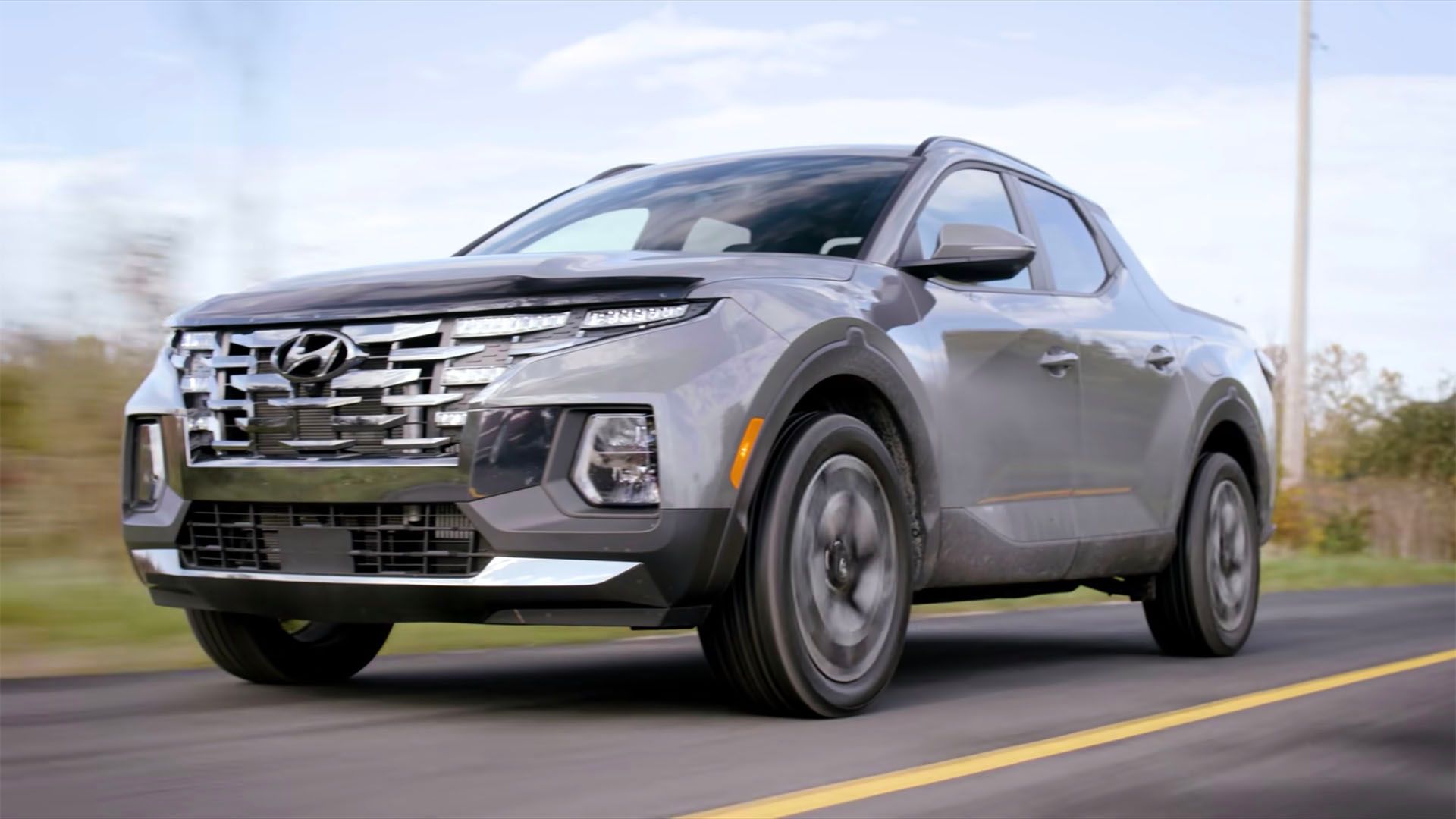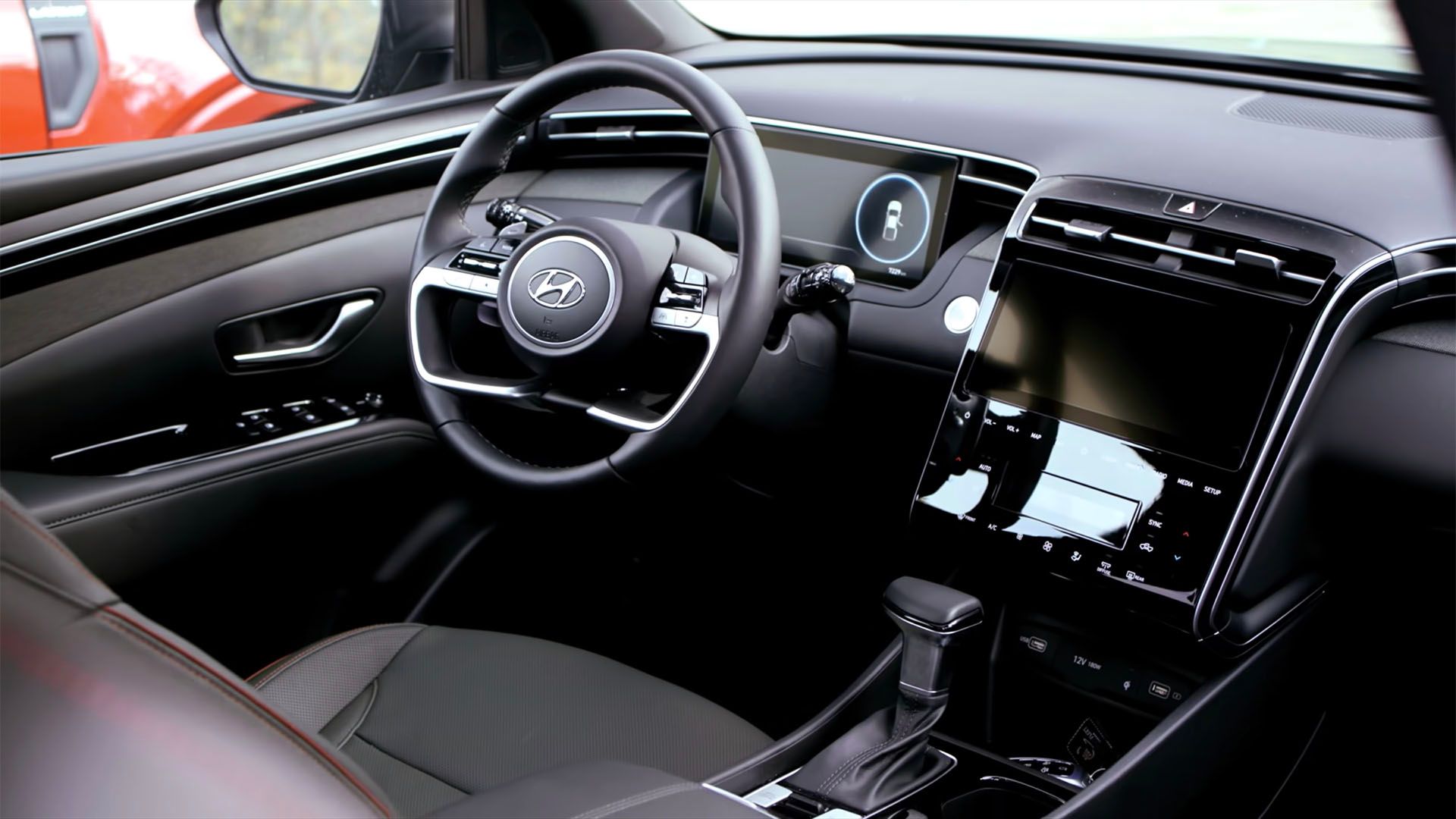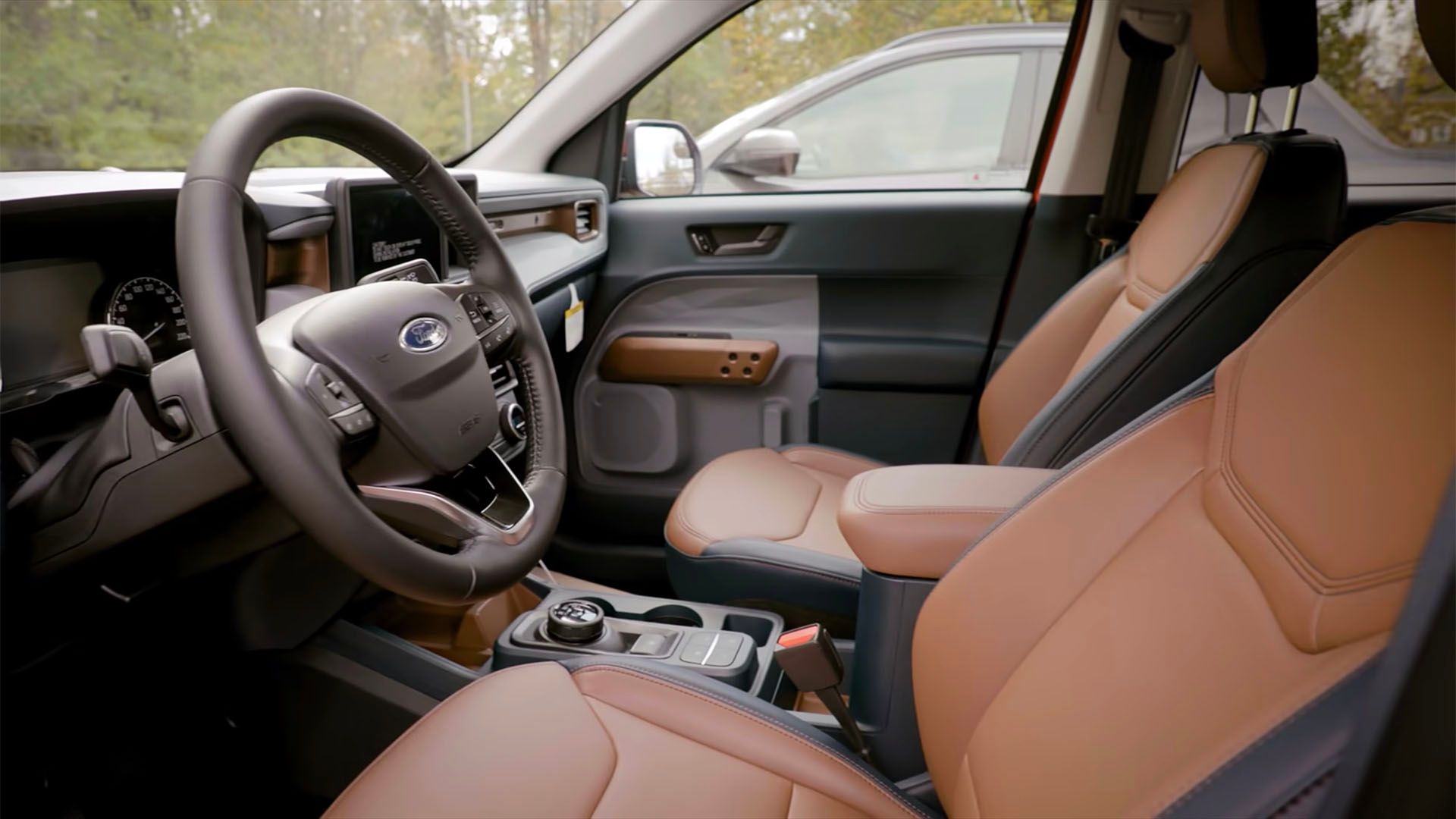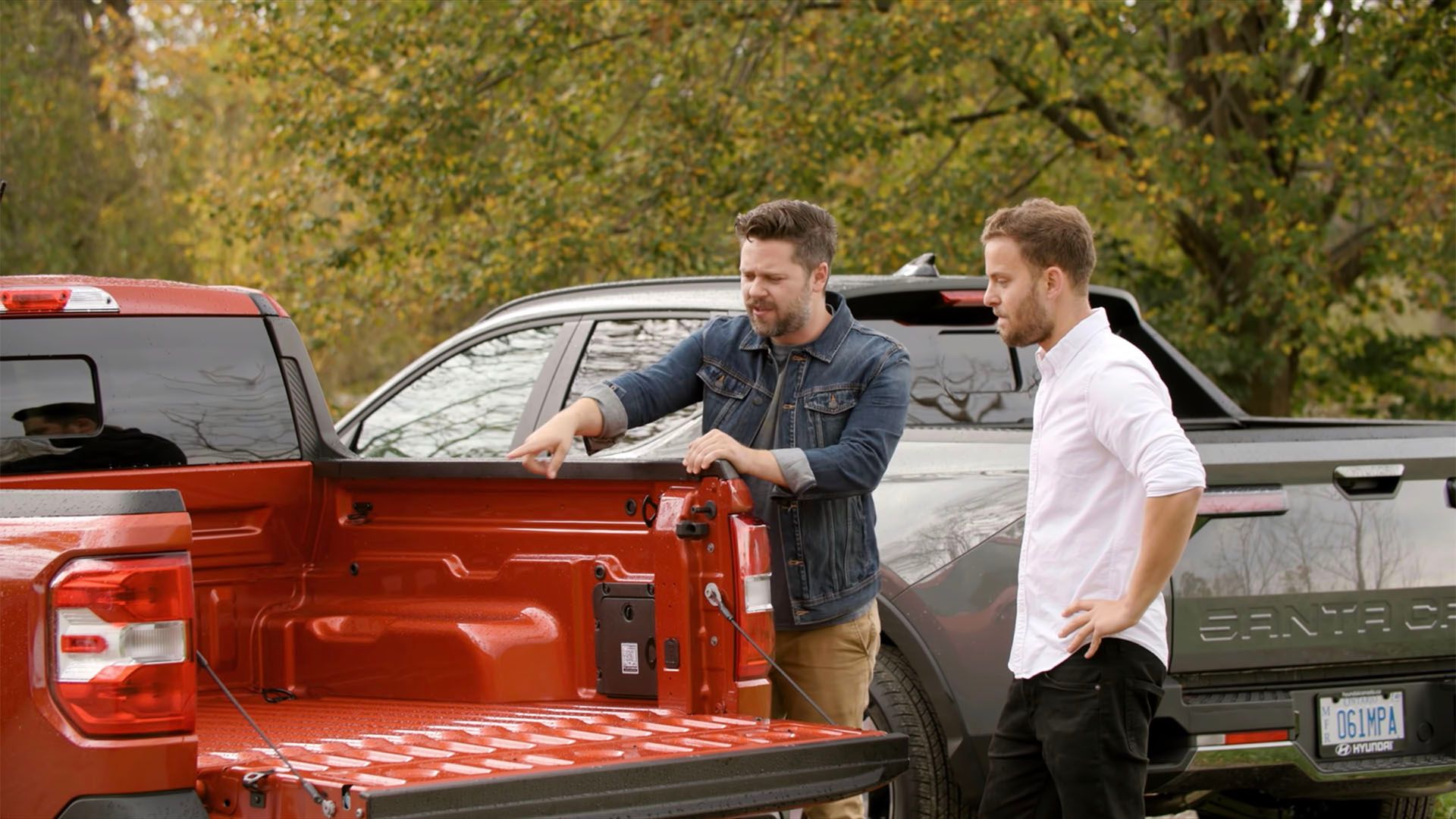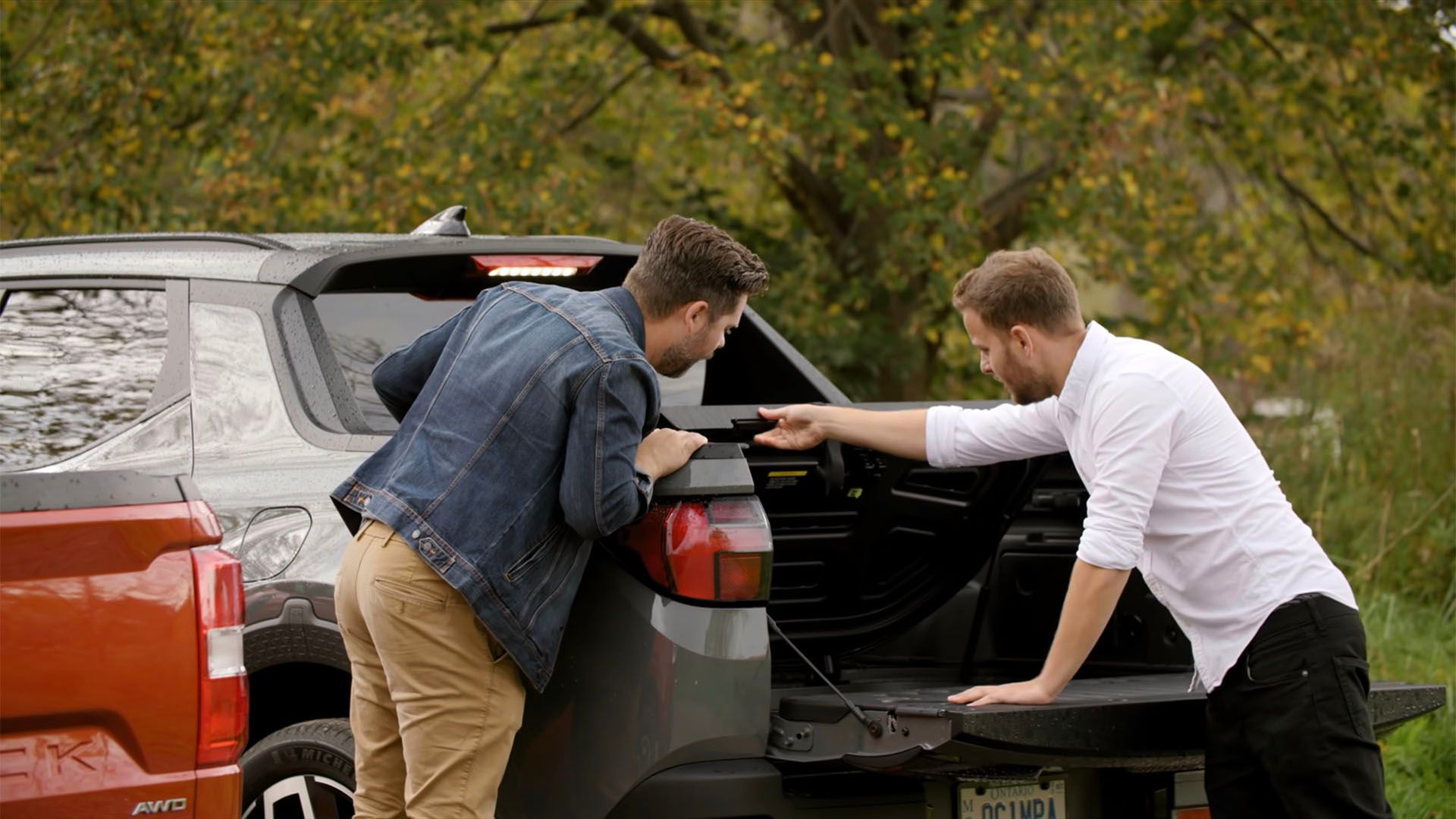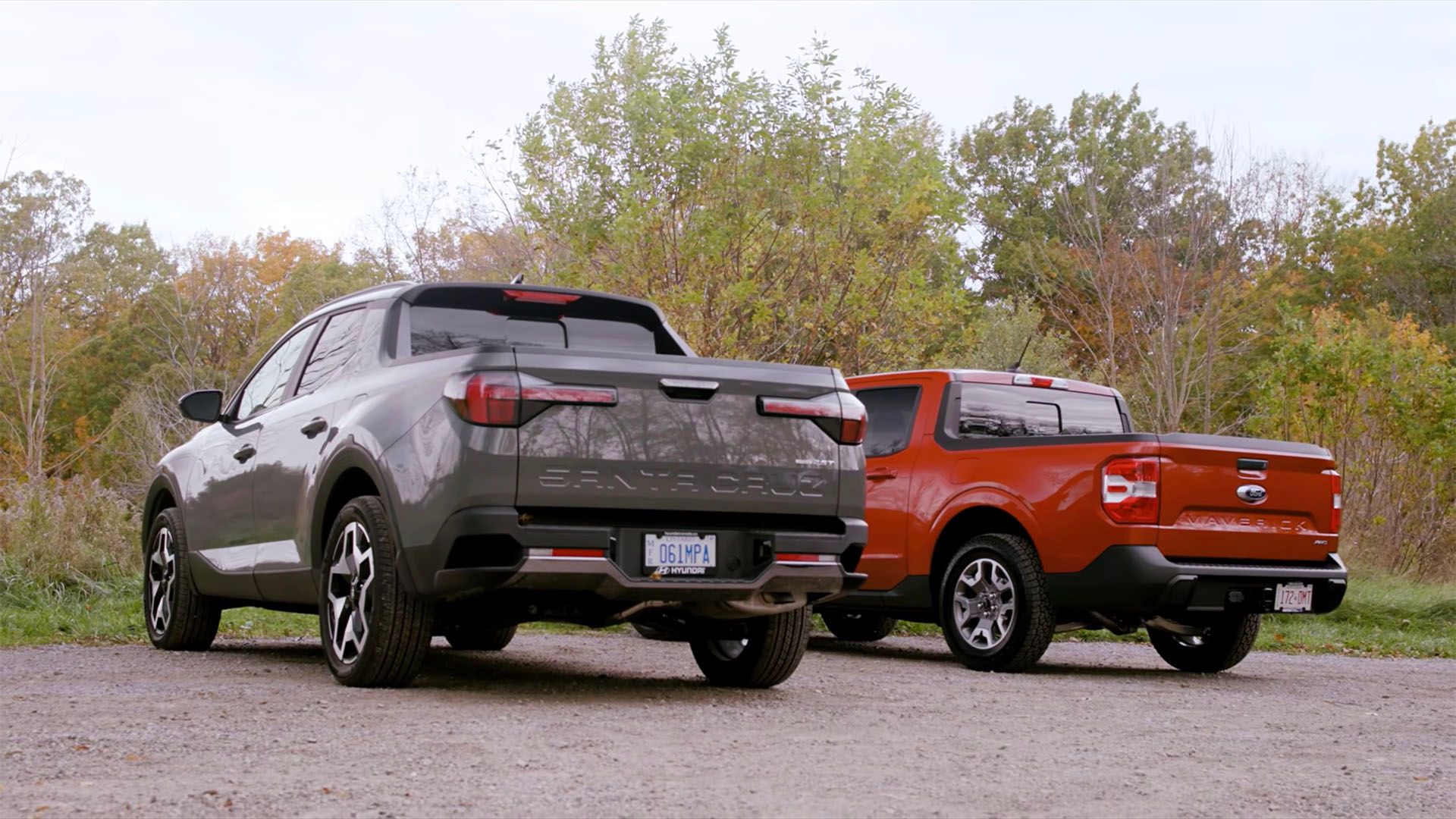The Hyundai Santa Cruz and Ford Maverick can be credited for reviving the compact pickup truck segment. Mid- and full-size pickup prices have crept up over the years, and the revival of this category meant that an affordable, albeit compact pickup is once again within reach.
It also means that comparisons between the two pickups are pretty much inevitable. Thankfully, Throttle House has done the work for us, and they are able to give us an idea of which compact pickup is better.
Let's first talk about the engines. For this comparison, both pickups feature their respective top-of-the-range engine options. In the case of the Ford Maverick, it is powered by a 2.0-liter inline-four turbo gasoline engine that produces 250 horsepower and 277 lb-ft (376 Nm) of torque. Meanwhile, the Santa Cruz fights back with its 2.5-liter inline-four turbo gasoline engine that produces 281 horsepower and 311 lb-ft (422 Nm) of torque.
As for their transmissions, both engine choices get an eight-speed automatic transmission, but they differ in how it works. The Ford Maverick uses the traditional torque converter automatic, while the Santa Cruz uses a wet dual-clutch transmission. And then if fuel economy is your concern, then the Ford Maverick with this Lariat trim's 2.0-liter mill is better. It achieved 27.6 mpg versus the Santa Cruz's 21.4 mpg.
Driving dynamics-wise, Thomas and James conclude that there's not much in it between the two vehicles. Sure, the Santa Cruz drives a little bit better, especially regarding its snappier wet dual-clutch, but the differences aren't night and day. So to split their decision, the two presenters discussed the practicality and aesthetic qualities of the two vehicles.
From the outside, the Hyundai Santa Cruz does look fancier and more stylish. After all, it's basically a Tucson with a bed. Thomas, however, prefers the straightforward truck aesthetic of the Maverick. Its humble looks also give it a lower starting price of $19,995 here in the United States versus the Santa Cruz's $23,990 base price. Though as expected, the entry-level Maverick has far fewer exterior embellishments (it has steel wheels, for instance) than a base-level Santa Cruz.
As for the interior, the Santa Cruz likewise has a more stylish design, but it does come with one major drawback--the lack of physical buttons. In lieu of those are capacitive touchpoints that control the AC and infotainment system, which is fiddly to use compared to the Maverick's more intuitive physical buttons. While the Santa Cruz has more digital stuff such as the LCD gauge cluster, the Maverick is far more practical and functional, and it's why Thomas yet prefers the Ford over the Hyundai.
And then there's of course, the bed. Ford spent a lot of effort in developing the Maverick's utility, and it shows in this comparison. The Maverick comes as standard with a built-in 12-volt electrical power that is prewired to an easily removable cover on either side of the back of the bed. This enables a host of DIY projects that you simply can't do at the Santa Cruz's tailgate. It must be noted, however, that a spray-in bed liner is an optional extra and is part of the Lariat's Luxury Package.
At least in the model that was presented, the Santa Cruz gets a tonneau cover. Unfortunately, it eats into the truck's bed space, though this is compensated by its under-bed storage that comes with a drain plug.
In the end, choosing between the two almost entirely comes down to personal preference. As James points out, the Maverick is a car-ish truck, while the Santa Cruz is a truck-ish car. The former is a truck that performs like a car, while the latter is a car that tries to be a truck. If you want something that's more stylish and perhaps a lot more digital, then the Santa Cruz is for you. On the other hand, the Maverick is for the traditional truck buyer who doesn't need the girth of something like a Ranger or an F-150.

